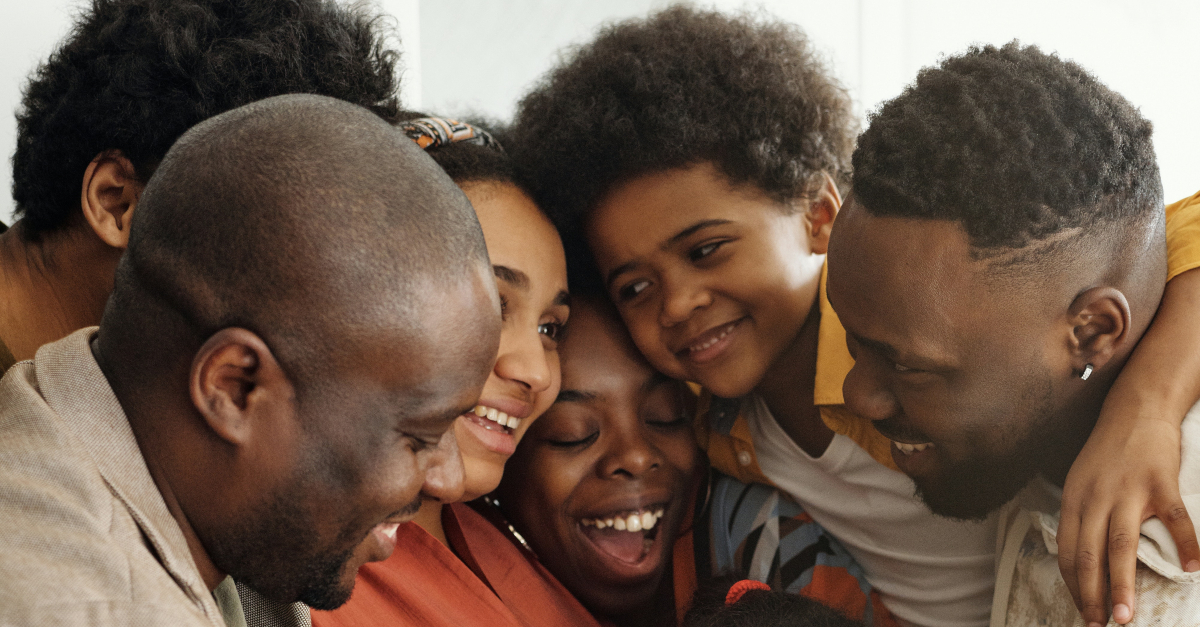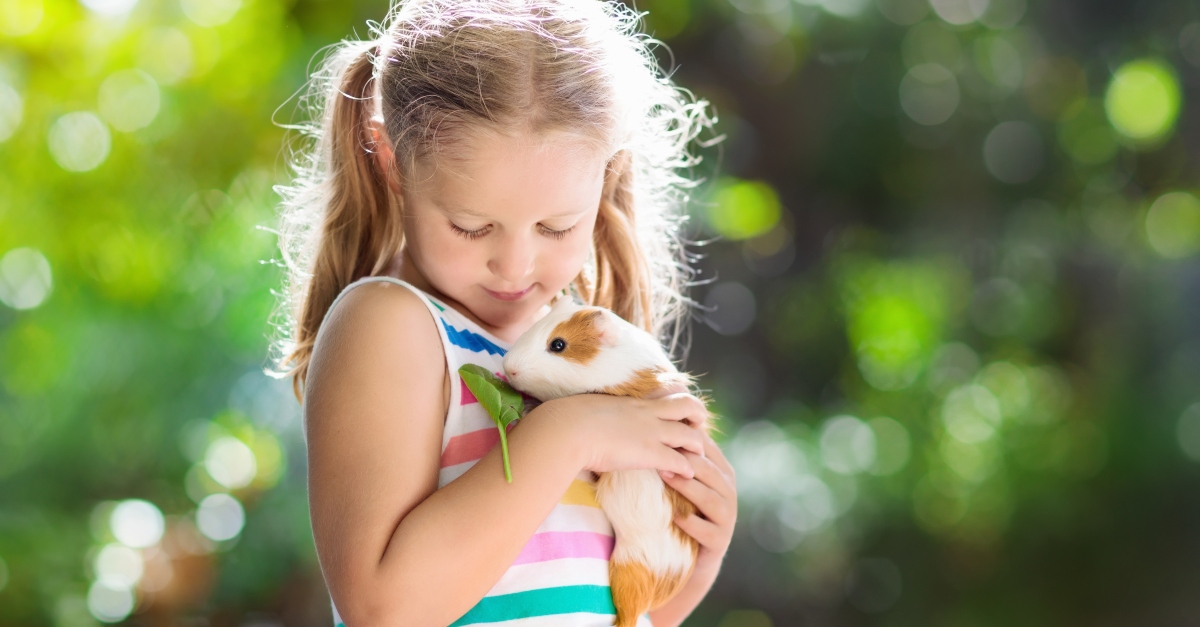How to Teach Your Kids Kindness

Many studies show a relationship between performing acts of kindness to happiness, well-being, and other positive benefits. Thus, teaching children how to be kind and encouraging kind behavior equips them for a happier life. The great news for parents is that kindness is teachable. Dr. Ritchie Davidson from the University of Wisconsin explained, "It's kind of like weight training, we found that people can actually build up their compassion 'muscle' and respond to others' suffering with care and a desire to help."
Kindness is also tied to the chemicals oxytocin and dopamine that our bodies release. Empathy increases the release of both. These chemicals make us feel good. Promoting kindness also fosters a more cheerful home.
Kindness Starts with Parents
Children learn what they live, so model kindness. That includes spouses being kind to one another, using polite words, being thoughtful, and showing kindness in action. Parents can help one another, help a child clean up, encourage children with their words, read to their children, and share their things, including a special dessert.
Children notice when one parent returns home to a spouse who welcomes them, hugs them, and shows kindness. Often children will also start greeting the parent or other family member who returns to the house. Such service makes entering the home pleasant and creates a welcoming atmosphere.
Inspire Kindness through Words
Thanking a child and adding, "That was so kind of you" reinforces kind actions. Parents can also use conversation to share about kindness. They can talk about how someone blessed them that day with a kind action or words. They can chat about how each person showed kindness, how it made them feel, and help children create a list of kind deeds they can do for their family and other people.
Families can share kindness slogans like "There's never too much kindness in the world" and prompt children to create new slogans. Asking what acts of kindness each person did inspires children to act with compassion. Talking about the topic helps children process the ideas and value actions that help others.
Help Children Spread Kindness
Encourage your children to be kind with some simple campaigns. Try spreading kindness as a family and watch what happens. Start with smiling at people you meet. See if they smile at someone else. Then compliment people you see. Praise individuals for their outfits, smile, hair, or kind deeds they performed in the past.
Go a little further, try asking how someone is doing and pause to really listen for the answer. Respond according to their answers. The next time you see the person follow up on what they said the last time. That shows you listened and valued their words and feelings. Such conversations help children learn how to communicate with others kindly.
Teach Appreciation

One man wanted to promote kindness at home and started complimenting his wife after dinner for her cooking or menu choice. When he cooked, she complimented his cooking. Soon, the children began thanking the parent who cooked. They all discussed how they should notice what someone does and show appreciation. That's a kindness that's easy to do. List what actions to notice that friends, teachers, store workers, and other people do and encourage children to be specific in what they recount. Practice phrases that show appreciation.
So, 'thanks for carefully packing my purchase' or 'thanks for playing with me' are phrases that show you noticed the person's effort, and it made a difference to you. Practice appreciation at home by thanking children for helping, cleaning, hugging you, or just being themselves in a way that always makes your day better.
Along the Way Kindness
Parents can set an example of being kind when someone is rude. Start with being kind when someone cuts in front of your car. Instead of getting angry, say, "I'm happy to let you go ahead. It's a little way I can be kind today." Pray for the person who is in such a rush that they cut you or someone else off. That sets an example that helps children react in a kinder way when a child grabs a toy they wanted or cuts in front of them in line. It shows that kindness begins with our attitude.
If we choose to be kind no matter what, we will discover we feel less angry about the actions of others. This can extend to paying ahead some money towards purchasing the next person in a drive-through or a store line. Be intentional by buying a gift card for a store where you regularly shop and handing it to the customer behind you, especially when you have a large or complicated order. These are little ways to model kindness to children as they accompany you.
Teach Intentional Kindness
We build on kindness with inspiring empathy and compassion. That starts naturally if we chat about how our children feel when they express various emotions. It helps them identify words like angry and happy. Learning continues when we ask what they notice about a friend's feelings. That's when we can ask, "How do you think your friend feels when you won't share? Or "What can you do to help your friend feel happier" or "Can you show your friend you are happy it's their birthday?" Those are the first steps in helping children be intentional in kindness.
Take another step by helping your child think of kind deeds like gathering toys and clothes they no longer need to give the poor, making sandwiches for the poor, or making a card for a friend. As they perform such deeds, discuss how it felt to help someone.
Ask if they have ideas for more kind deeds. Be mindful. Pause when you hear a siren and pray with your children for anyone who might be hurt and the workers. Ask the waitress if they have a prayer need at a restaurant and pray for that with your children as you bless the food. Make a practice of spying out who they can shower with kindness.
Use Art to Teach Kindness
Many children like art and making simple crafts. Making an extra craft to give a friend can be easy. Add words to paper crafts that express kindness. In giving a handmade craft as a gift, add a card and words that say, 'you are special.' It often only takes paper and coloring supplies. Create an art box for children to pull out to make a craft when they have time. Have a place where they are allowed to work with glue and other supplies. That inspires them to be creative and make crafts to give. It also inspires generosity. When doing art with a friend or group, remind them to find something nice to say about each person's craft and share supplies with a smile.
Encourage your child to make a poster or drawing about kindness to display in your home. Or make art to share a kind deed someone did for you. Use permanent markers to write kind messages on rocks and place them in rock beds at shopping centers and parks. Ideas of what to write:
- Be you! You are beautiful!
- Thanks for being kind!
- Kindness is free
- God loves you!
- You make the world better!
- You are precious!
- Rock it today!
Role Play Kindness Scenarios
Children may not know what to say or how to help someone in need, so pretending and role-playing can help them learn. Think of scenarios, discuss each one, and then act them out. This may include noticing a new child at school or church, seeing someone fall or drop items they were holding, hearing someone cry, seeing mom cooking, or knowing a sibling or parent has to leave soon but did not clear their place at dinner.
Include situations that help develop empathy like seeing a child sitting apart from others, a friend asking to play with your favorite toy, a child telling you her mom or dad has cancer, or someone's parents are getting divorced. Make sure your child is old enough for the tougher scenarios and discuss how the child might feel. Reverse roles at times with a parent playing the child and the child playing the parent. You might each hear how you sound at times.
Kindness with Creatures

As children learn to be gentle with tiny creatures like kittens and puppies, they learn to extend that to people. Practice animal kindness with stuffed animals to know how to pet and where not to put your hands that might scare or hurt a pet. Go outside and marvel at God's creatures, big and small.
Choose ways to help animals:
- Children can help feed a pet at home or a petting zoo.
- Visit a nursery to buy and plant flowers that attract butterflies to fill your yard with beautiful flying creatures.
- Remind children not to liter as what they toss out might be harmful to animals.
- Cut up plastic 6-pack rings as it can harm sea and land creatures.
- Feed seeds to birds or put out hair for nesting materials.
To promote kindness to creatures, read about animals and talk about what each one needs. Read and chat about service dogs that help and how we cannot pet those dogs, but we can praise the owners about the dogs. Support an animal shelter. Ask if you can make toys for the animals and try making a few.
Self-Kindness
Children should also be kind to themselves. This means making healthy food choices, exercising, brushing teeth, and getting a good night's sleep to keep their bodies healthy. It also means not to think positive thoughts about themselves and not complain that they are dumb or knock their looks. Ban words like never or always as they can be used to say, "I'll never be good at math." Make sure you don't say those things about yourself either as part of being a good role model. Teach them to say positive affirmations about themselves like 'I try hard," I am a good friend," "I like being kind," or "God made me and loves me the way I am.
Respond to criticism kindly. If someone says that's an ugly shirt, reply, "It's so comfy that I'll keep wearing it." Or "My grandma picked it out, and it reminds me that she loves me." And then say, "I hope your shirt is comfy too. It looks nice on you." They should always remember God loves them to remain positive about their self-image.
A Sampling of Studies Focused on the Benefits of Kindness:
Kindness indeed makes a difference. Here are just a few studies done that show positive results of being kind:
- A study from 2012 conducted at the University of British Columbia summarized their findings: Children who make an effort to perform acts of kindness are happier and experience greater acceptance from their peers, suggests new research.
- Framingham Heart Study social network concluded that emotional states spread from person to person. This applies to kindness too.
- Cooperative behavior cascades in human social networks." By James H. Fowler and Nicholas A. Christakis. Proceedings of the National Academy of Sciences, Vol. 107 No. 10, March 9, 2010, concluded that a single act of kindness could influence dozens more. Cooperative behavior like passing on kindness produces a cascading effect.
- Research in a project called Kindness Counts by a group of researchers, including Kristen Layous, showed acts of kindness performed by students increased their peer acceptance and well-being.
- A 2-month Study conducted at the University of California showed volunteers' happiness levels increased around 40%. Such studies suggest that being kind makes us kinder and creates a positive feedback loop between happiness and kind actions.
Enjoy teaching your child to be kinder. It will probably make you both be more compassionate and helpful.
Karen Whiting is the author of more than thirty books and mother of five adult children. Her new book The Super-Sized Book of Bible Craft Gifts incorporates kindness and encouragement into the 100+ paper crafts.
Photo credit: ©Getty Images/Hakase_
Karen Whiting is a mom, author, international speaker, writing coach, and former television host who loves sharing ideas to strengthen families. She has written Growing a Mother’s Heart: Devotions of Faith, Hope, and Love from Mothers Past, Present, and Future and 52 Weekly Devotions for Family Prayer, which includes a different way to pray each week plus stories and activities to explore questions children ask about prayer. Her book, Growing a Joyful Heart co-authored with Pam Farrel, shares stories that show how to have inner joy, more joy in relationships, choose joy in all circumstances, and become a joy-giver. Her latest book is Stories of Faith and Courage from the Home Front, written with Jocelyn Green. She loves adventure including camel riding, scuba diving, treetop courses, and white water rafting plus time at home crafting and baking.
Originally published February 10, 2022.







